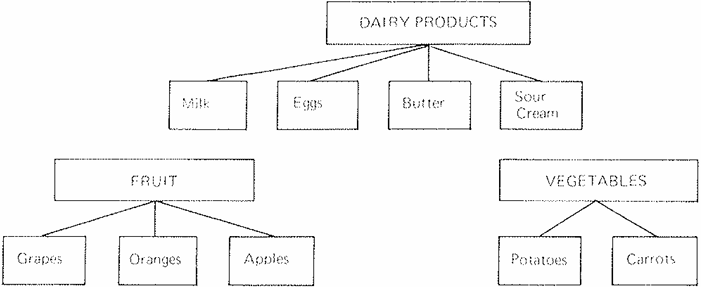

Grammar


Tenses


Present

Present Simple

Present Continuous

Present Perfect

Present Perfect Continuous


Past

Past Continuous

Past Perfect

Past Perfect Continuous

Past Simple


Future

Future Simple

Future Continuous

Future Perfect

Future Perfect Continuous

Passive and Active


Parts Of Speech


Nouns

Countable and uncountable nouns

Verbal nouns

Singular and Plural nouns

Proper nouns

Nouns gender

Nouns definition

Concrete nouns

Abstract nouns

Common nouns

Collective nouns

Definition Of Nouns


Verbs

Stative and dynamic verbs

Finite and nonfinite verbs

To be verbs

Transitive and intransitive verbs

Auxiliary verbs

Modal verbs

Regular and irregular verbs

Action verbs


Adverbs

Relative adverbs

Interrogative adverbs

Adverbs of time

Adverbs of place

Adverbs of reason

Adverbs of quantity

Adverbs of manner

Adverbs of frequency

Adverbs of affirmation


Adjectives

Quantitative adjective

Proper adjective

Possessive adjective

Numeral adjective

Interrogative adjective

Distributive adjective

Descriptive adjective

Demonstrative adjective


Pronouns

Subject pronoun

Relative pronoun

Reflexive pronoun

Reciprocal pronoun

Possessive pronoun

Personal pronoun

Interrogative pronoun

Indefinite pronoun

Emphatic pronoun

Distributive pronoun

Demonstrative pronoun


Pre Position


Preposition by function

Time preposition

Reason preposition

Possession preposition

Place preposition

Phrases preposition

Origin preposition

Measure preposition

Direction preposition

Contrast preposition

Agent preposition


Preposition by construction

Simple preposition

Phrase preposition

Double preposition

Compound preposition


Conjunctions

Subordinating conjunction

Correlative conjunction

Coordinating conjunction

Conjunctive adverbs


Interjections

Express calling interjection


Grammar Rules

Preference

Requests and offers

wishes

Be used to

Some and any

Could have done

Describing people

Giving advices

Possession

Comparative and superlative

Giving Reason

Making Suggestions

Apologizing

Forming questions

Since and for

Directions

Obligation

Adverbials

invitation

Articles

Imaginary condition

Zero conditional

First conditional

Second conditional

Third conditional

Reported speech


Linguistics

Phonetics

Phonology


Semantics


Pragmatics

Linguistics fields

Syntax

Morphology

Semantics

pragmatics

History

Writing

Grammar

Phonetics and Phonology


Reading Comprehension

Elementary

Intermediate

Advanced
The Magical Number Seven
المؤلف:
BARBARA MINTO
المصدر:
THE MINTO PYRAMID PRINCIPLE
الجزء والصفحة:
3-1
2024-09-03
282
There is a limit to the number of ideas you can comprehend at any one time. For example, think of deciding to leave your warm, comfortable living room to buy a newspaper. "I think I'll go out and get the paper," you say to your wife. "Is there anything you want while I'm out?"
"Gosh, I have such a taste for grapes after all those ads on television," she says as you walk toward the closet to get your coat, '~md maybe you ought to get some more milk."
You take your coat from the closet as she walks into the kitchen.
"Let me look in the cupboard to see if we have enough potatoes and, oh yes, I know we're out of eggs. Let me see, yes, we do need potatoes."
You put on your coat and walk toward the door.
"Carrots and maybe some oranges."
You open the door.
"Butter."
You walk down the stairs.
''Apples."
You get into the car:
''And sour cream."
"Is that all?"
"Yes, dear, thank you."
Now; without reading the passage over, can you remember any of the nine items your wife asked you to buy? Most men come back with the newspaper and the grapes.
The major problem is that you've run into the magical number seven. This is a phrase coined by George A. Miller in his treatise, "The Magical Number Seven, Plus or Minus Two."1· What he points out is that the mind cannot hold more than about seven items in its short-term memory at any one time. Some minds can hold as many as nine items, while others can hold only five (I'm a five myself). A convenient number is three, but of course the easiest number is one.
What this means is that when the mind sees the number of items with which it is being presented begin to rise above four or five, it starts to group them into logical categories so that they can be retained. In this case, it would probably put the items into categories that reflect the sections of the supermarket you would need to visit.
To demonstrate how this helps, read the list below and categorize each idea in this way as you come to it. You will very likely find that you remember them all.

If you try to visualize this process, you will see that you have created a set of pyramids of logically related items.

1 Mille, George A The psychology of Communication: Seven Essays (Basic Books: Pa.) -1967.